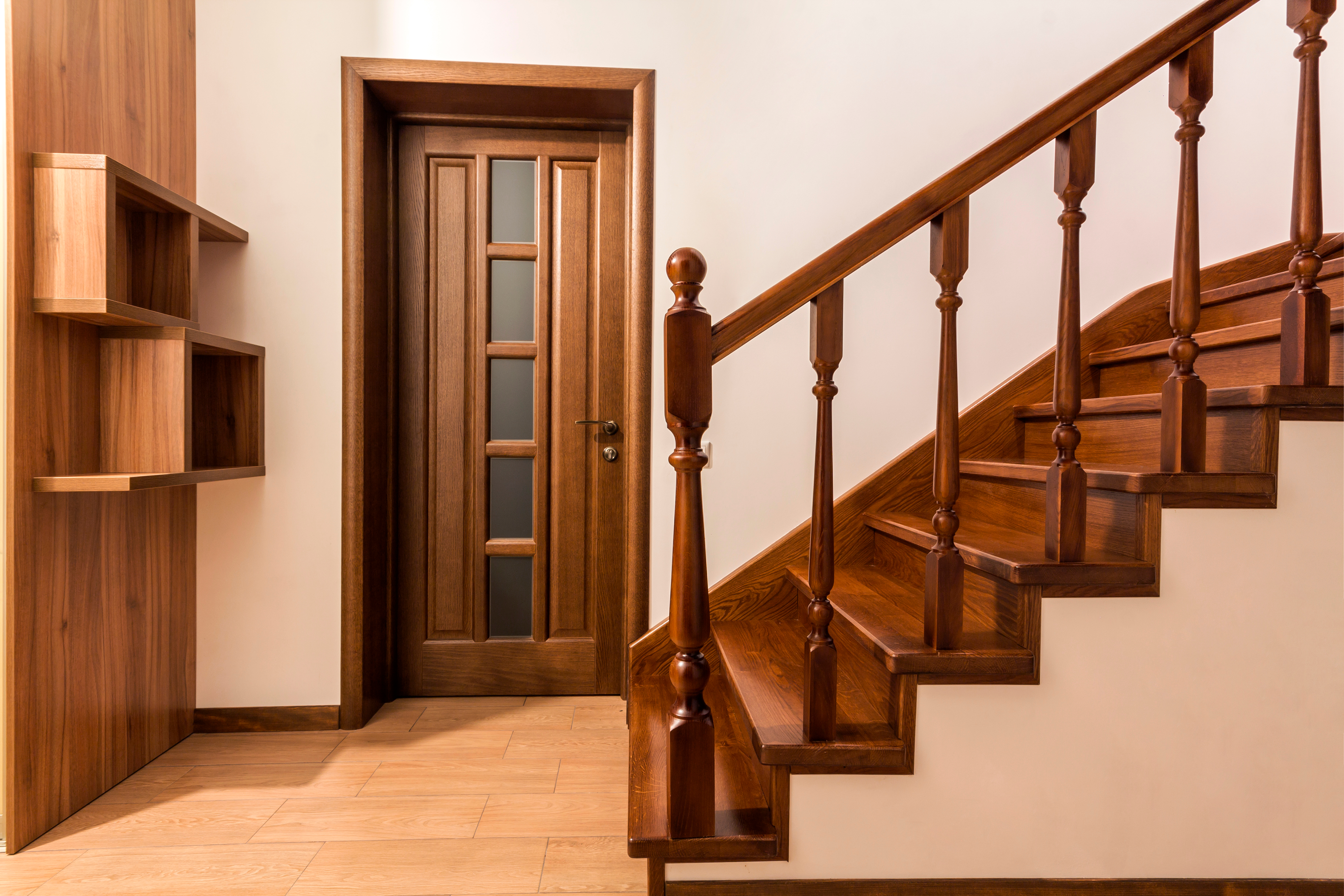Introduction
Explore different handrail designs across India. From traditional wooden to modern glass styles, learn which type best suits your space and needs.
In this article
- Wooden Handrails: The Timeless Classic
- Metal Handrails: Strong and Versatile
- Glass Handrails: Contemporary
- Stone Handrails: The Regal Touch
- Cable Handrails: Minimalist Marvels
- Concrete Handrails: Functional and Durable
- Mixed-Material Handrails: The Best of Both Worlds
- Cultural Influences on Handrail Design
- Choosing the Right Handrail for Your Space
While handrails might not take centre stage in architectural discussions, they play a crucial role - whether it be to add a layer of safety to your staircase or making a statement on your balcony. From traditional wooden balustrades to sleek glass panels, handrail designs are a blend of aesthetics, function, and local influences. Let’s take a closer look at the various handrail styles and how they’re used across the country.
1. Wooden Handrails: The Timeless Classic

Design:
Wooden handrails exude nostalgia, warmth and elegance. They are often intricately carved with themes, especially in traditional homes.
Applications:
• Kerala's traditional homes showcase elegant teak and rosewood designs that complement the region's architectural heritage.
• Rajasthan's havelis combine wooden handrails with intricate jaali work to create stunning visual displays.
• Mountain homes in Himachal Pradesh and Uttarakhand utilize local pine and cedar to create rustic yet refined installations.
2. Metal Handrails: Strong and Versatile

Design:
Metal handrails, are made of steel, iron, or aluminium. Ranging from simple straight bars to ornate wrought iron patterns, they offer the perfect combination of durability and contemporary design, bringing strength and style to modern spaces.
Applications:
• Urban apartments in cities like Mumbai, Bangalore and Delhi prefer stainless steel for its smooth, low-maintenance appeal.
• Colonial-style homes in Kolkata often feature wrought iron railings with floral or geometric patterns, reflecting historical influences
• Industrial spaces across metropolitan cities incorporate raw or blackened iron for an authentic urban feel.
3. Glass Handrails: Contemporary

Design:
Glass handrails - framed with metal or frameless - bring transparency and lightness to spaces, creating modern installations that emphasize openness. Tempered glass also ensures safety while maintaining aesthetics.
Applications:
• These are popular in high-rise apartments in Bangalore and Gurgaon for balconies and staircases.
• You can find them frequently used in luxury resorts in Goa and Kerala, blending with the scenic surroundings.
• They can add a touch of sophistication to commercial buildings and showrooms across urban centres.
4. Stone Handrails: The Regal Touch

Design:
Stone handrails carry the weight of tradition while providing enduring beauty and strength to architectural spaces. They are carved from marble, sandstone, or granite, and are often heavy and ornate.
Applications:
• Palaces and temples in Rajasthan, like the ones you find in Udaipur and Jaipur. These feature intricate marble handrails that showcase regional craftsmanship.
• You can also find them in traditional Tamil Nadu homes, where granite is favoured for its durability and elegance.
• Overall you can frequently see them in heritage structures across India, maintaining a timeless appeal.
5. Cable Handrails: Minimalist Marvels

Design:
Cable handrails are the answer to modern, sleek, and minimalistic types. Steel cables stretched between posts create a clean, open look.
Applications:
• These are found in modern villas in cities like Hyderabad and Pune and are often paired with wooden or metal posts.
• Also ideal for coastal homes in Maharashtra and Goa, to maintain ocean views while ensuring safety.
• Used in eco-friendly resorts and nature retreats for their lightweight and sustainable vibe.
6. Concrete Handrails: Functional and Durable

Design:
Concrete handrails, though simple in appearance, are the ultimate in strength and practicality. They are durable and can be moulded into various shapes for added design value. Its textured finishes create safe, non-slip surfaces for enhanced safety in all weather conditions.
Applications:
• Government buildings across India utilize concrete handrails for their longevity and low maintenance requirements.
• Used in brutalist architecture in urban centres like Delhi and Chandigarh.
• Found in outdoor staircases for gardens and terraces in suburban and rural homes.
7. Mixed-Material Handrails: The Best of Both Worlds

Design:
Combining materials like wood and metal, or glass and steel, mixed-material handrails are versatile and highly customizable. The combination creates visual interest through contrasting textures and finishes.
Applications:
• Seen in luxury homes in Mumbai and Bangalore, where bespoke designs are in demand.
• Also popular in modern offices and coworking spaces for their unique aesthetic appeal.
• Designer villas incorporate multiple materials to create unique architectural statements.
Cultural Influences on Handrail Design

Handrail designs in India often reflect regional and cultural identities:
• South India: Intricate woodwork, inspired by temple architecture.
• North India: Ornate wrought iron and stone designs, echoing Mughal and Rajput styles.
• Western India: Minimalist and modern, especially in urban centres.
• Eastern India: Colonial influences with a blend of tradition, often featuring iron and
Choosing the Right Handrail for Your Space

1. Functionality First: For homes with kids or elderly, prioritize safety with sturdy, well-placed handrails.
2. Match Your Style: Pair handrails with your overall design theme—modern, traditional, industrial, or minimalist.
3. Maintenance Matters: Choose materials based on your lifestyle. For example, glass requires regular cleaning, while wood needs occasional polishing.
4. Regional Climate: Go for materials that withstand your local weather—metal for coastal areas, wood for dry regions, and concrete for heavy rains.
In conclusion
Handrails may be functional, but they for sure don’t have to be boring! From the regal stone balustrades of Rajasthan to the sleek glass panels of urban India, they’re a small but significant part of a home’s character. The trick lies in balancing aesthetics, durability, and cultural context—because a good handrail isn’t just something you hold on to; it’s something that holds the design together.
Related articles
Sign up for the newsletter
If you want relevant updates occasionally, sign up for the private newsletter. Your email is never shared.

















